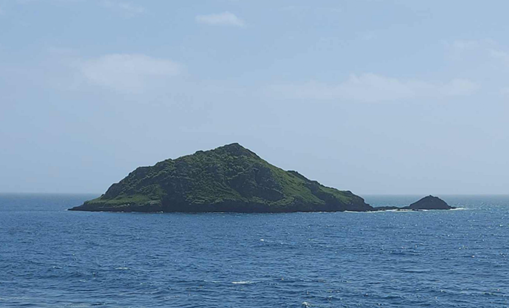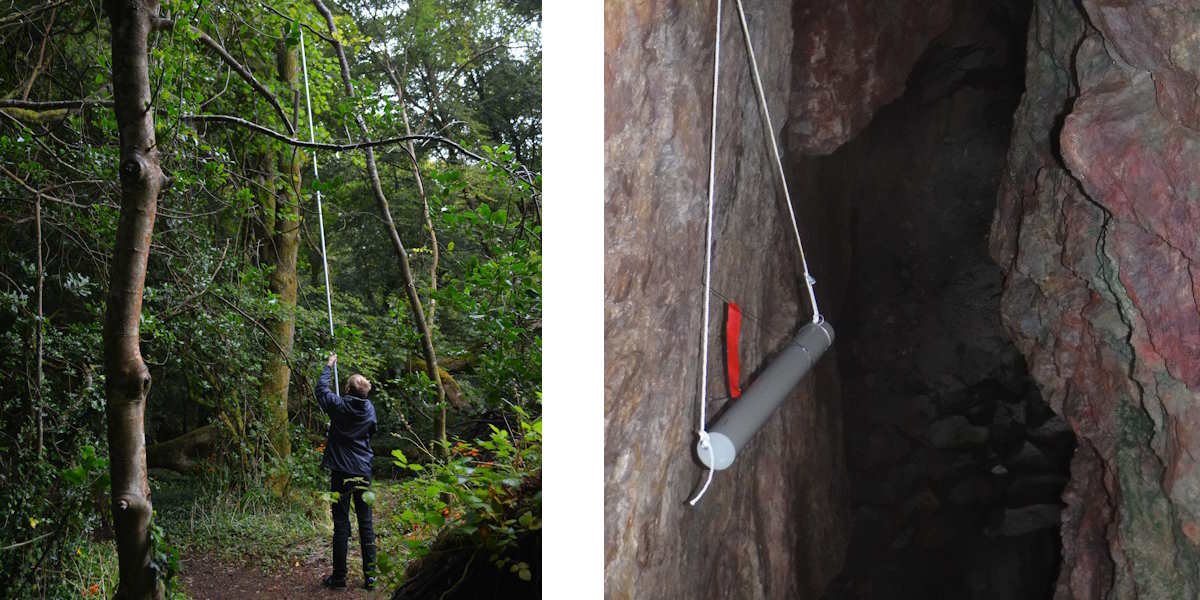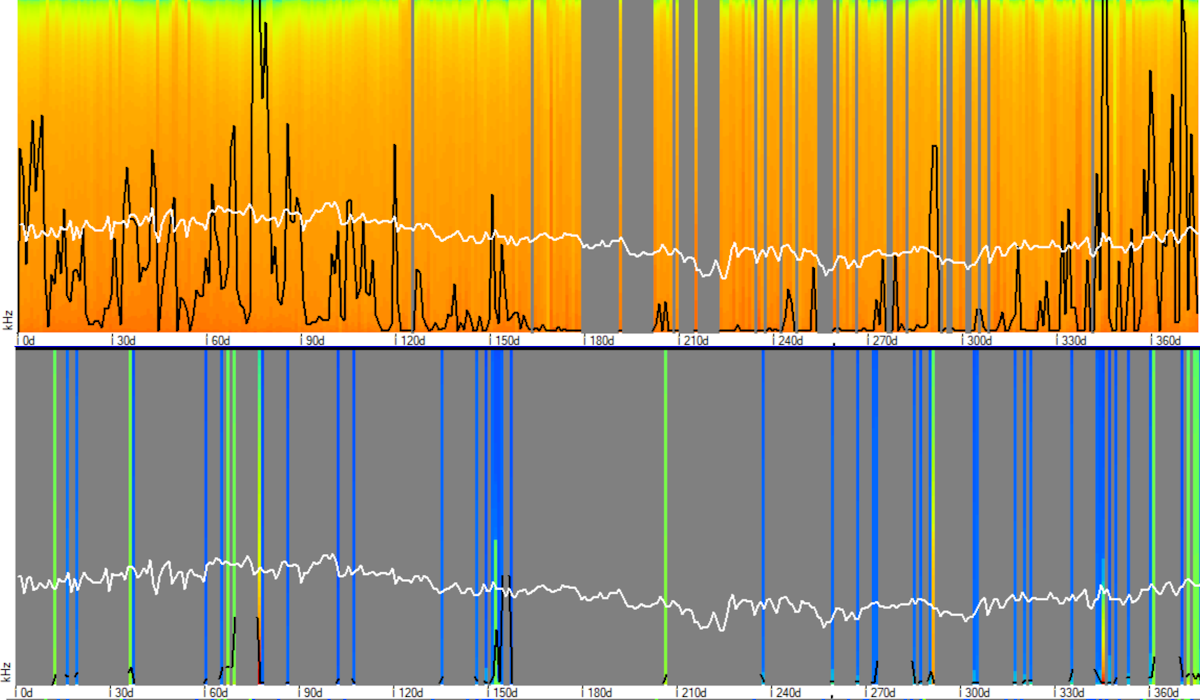
Inaccessible places
This is ‘The Mewstone’ – a small rocky island off the coast near Plymouth in SW Britain.
A solar powered BatBug was taken across by kayak and deployed for a year.
It showed regular visits by several bat species including Greater Horseshoe Bats that would most likely be entirely missed by short sampling periods, but with the continuous logging of the BatBug the annual pattern of visits of the species groups was clearly seen.
The carbon cost of accurate monitoring trends can be greatly reduced by the reduction in servicing vists, removal of recurring battery costs, and reduction in the indefinite carbon cost of archiving large data sets.

Public and dangerous places .... and pole deployments
BatBugs can easily be deployed in hard-to-reach places using a long extensible pole like those used by window cleaners.
Here a BatBug is hung high above a public path where almost no one will notice it. The orientation of the BatBug can be contolled by using a suitable hook to go over a branch.
In the second image a BatBug has been hung from a tiny ledge in the wall of a sea cave in the SW of Britain. The cave has been mined in the past and connects to mine workings that were shown to be used by Greater Horseshoe and Natterer’s Bats.
This BatBug is propped out using wire ‘legs’ to reduce echoes off the rock surface that would degrade the acoustics if the logger lay against the rock.

Low effort : great data. Garden deployments
This data comes from a solar powered BatBug sitting for a year on a seat in the garden of pioneering bat researcher, Prof Paul Racey, in a coastal site in the SW of Britain. The SD cards were read twice yearly, and the graphs show a whole year with winter in the middle. The black lines are the number of calls (actually in this case the summed number of sound cycles in calls). The colour bars are stacked bars showing the distribution of frequencies in all the calls. graded from Red = 20kHz to Violet = 140kHz. The white line is the temperature of the BatBug. The upper panel shows detections of Common Pipistrelle from a nearby roost site. (the black lines repesent number of calls, the coloured lines represent call kHz) The lower panel shows ‘constant frequency’ bats. Green is Greater Horseshoes at 80kHz, blue is Lesser Horsehoes at 110kHz.